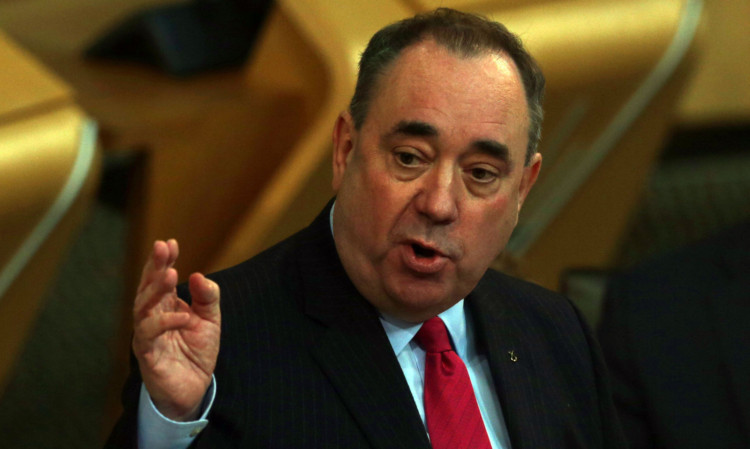Scotland will face the “severest cuts in political history” if voters reject independence, the First Minister has claimed.
The day after he launched the Scottish Government’s White Paper on independence, Alex Salmond challenged the leaders of the pro-Union parties to spell out what the financial impact of staying in the UK will be.
The parties involved in the anti-independence Better Together campaign Labour, the Tories and the Liberal Democrats must now “provide answers to fundamental questions about if Scotland maintains the Union”, he said.
“The assumption has been so far if we don’t have independence, everything will continue much as it is,” Mr Salmond said. “That’s not going to be the case.”
“The Government has set out our case for an independent Scotland. What we want to hear from the Unionist parties, Better Together, is how big is the Better Together raid going to be on the Scottish budget if Scotland votes No.”
The vision presented by the Scottish Government in the White Paper would be “contrasted against a future where they see low growth in population, low growth in the economy and Scotland subjected to the severest cuts in political history, over and above the retrenchment of the last few years”.To sign up for The Courier’s research panel and take part in our special independence white paper surveyclick hereMr Salmond said: “Politics are about choices and the choice next year will be between that new society or the future offered by Better Together, which for many Scots will be no future at all.”
Labour leader Johann Lamont attacked Mr Salmond over the Government’s currency plans.
She questioned how Scotland could be fiscally independent in a formal monetary union with the rest of the UK.
“We would have an independent Scotland which relied on a foreign bank and foreign taxpayers for our currency,” she said. “A foreign parliament from which we had withdrawn would draw up the rules.
“This independent Scotland would have its interest rates, its spending policy, its tax policy, its borrowing limits set by a foreign country.”
She added: “The idea that you would abuse the rest of the UK for how they have done us down, and then go back to them and say ‘Could you do us a favour and let us share your currency?’ simply beggars belief.
“The reality is better childcare, reform of the council tax, relieving the victims of bedroom tax we could do all of these now, if (Mr Salmond) is serious about making this Parliament work.
“The White Paper is littered with con-tricks. Scotland deserves better and Scotland will see through it.”
Conservative leader Ruth Davidson questioned whether an independent Scotland could become a full member of the EU within the 18 months between the referendum and the Government’s independence date in March 2016, and whether it could remain in the EU while this process takes place.
Ms Davidson said that European officials have said Scotland would not be able to approach the EU for membership “until after it’s finished all of its negotiations with the UK”, which contrasts with the Government’s view.
These negotiations with the UK would need to be “completed in time to start a formal membership application which would require each of the institutions of the EU and every one of the 28 other member states – each one holding a veto – to agree to change the founding treaty; to open up and amend a number of other treaties; to agree all the opt-outs secured by Britain that the SNP want to keep; to add to the commissioners; to add to the voting”, she said.
“All of that in a matter of mere months when from application to accession it takes states an average of eight years to join.
“The Scottish Government are desperate to prove that they don’t have to come out of Europe before they get to go back in. And they are contorting themselves in every possible way to find a straw to grasp on this issue.”
